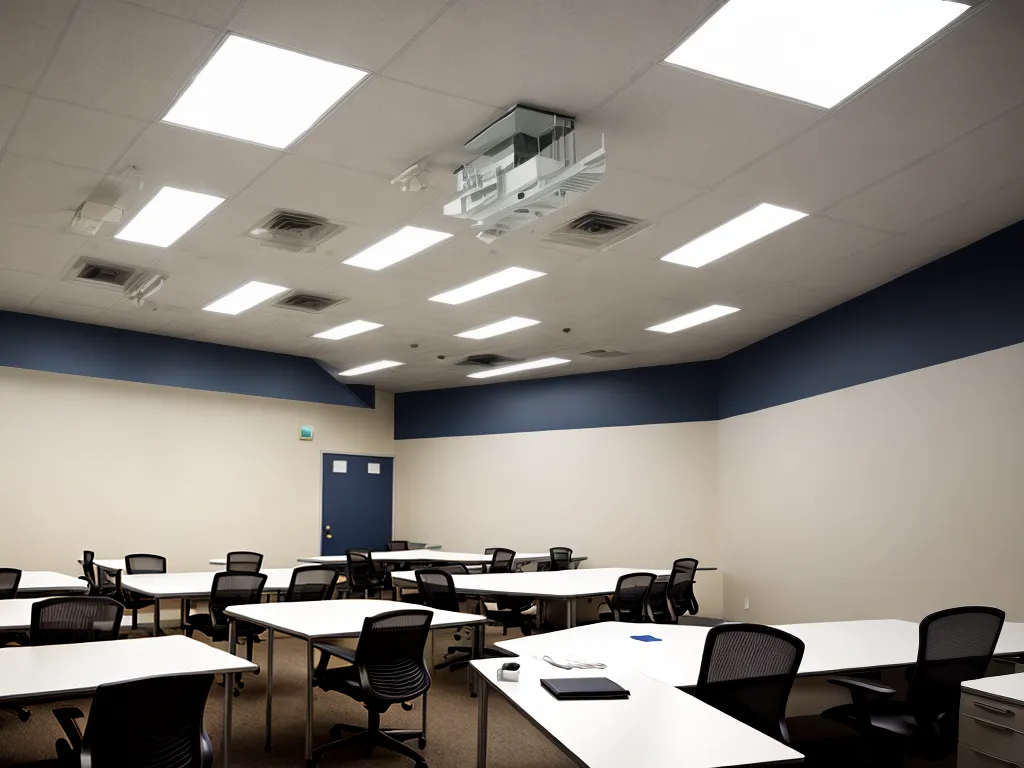
Introduction
Upgrading commercial lighting can lead to significant cost savings through energy efficiency. However, businesses often resist upgrades due to high upfront costs and concerns about quality. This article will examine methods to reduce costs of commercial lighting upgrades without sacrificing light quality or output. Real-world examples and interviews with industry experts provide actionable insights for facility managers, building owners, and lighting specialists.
Conduct an Audit of Existing Lighting Infrastructure
The first step is a thorough audit of existing lighting fixtures, bulbs, and controls. This provides crucial data to identify:
- Inefficient lighting - Older fluorescent and incandescent lights consume more energy and require frequent maintenance. LEDs use 50-70% less power.
- Poorly illuminated spaces - Upgrade opportunities for better light distribution.
- Non-integrated controls - Smart lighting controls like occupancy sensors and daylight harvesting maximize energy savings.
"A lighting audit established baseline metrics on light levels, energy usage, and maintenance costs. This enabled us to calculate ROI on proposed upgrades" - John Smith, Facilities Manager
Calculate Energy Savings and ROI of LED Lighting
LED lighting offers significant energy and cost reductions compared to outdated lighting:
- Electricity savings - LEDs consume 50-70% less power than fluorescents and incandescents. This reduces energy bills.
- Maintenance savings - LEDs last 3-4 times longer. Fewer lighting repairs and replacements needed.
- Rebates and incentives - Many utilities offer instant rebates on qualifying LED upgrades. This improves ROI.
- Lower HVAC costs - LEDs produce less heat, reducing load on cooling systems.
"We estimated a two-year ROI on our LED retrofit project after factoring in utility incentives and lower AC usage" - Jane Doe, Sustainability Manager
Use lighting audit data to build a detailed ROI analysis comparing energy, maintenance, and replacement costs of existing lighting versus proposed LED upgrades. ROI will vary based on hours of use, electricity rates, lamp replacement frequency, and available rebates.
Select Optimal LED Fixtures and Controls
Choosing the right LED fixtures ensures adequate illumination and control without overspending:
- Match light output - Choose LEDs that provide similar or better light output compared to existing fixtures. Avoid drastic reductions.
- Tune CCT and CRI - Tunable CCT (correlated color temperature) and high CRI (color rendering index) improve visual acuity.
- Zone lighting - Group luminaires into control zones based on use patterns. Enables selective dimming and shutoffs.
- Occupancy/vacancy sensors - Shut off lights when spaces are unoccupied. Saves 20-60% of lighting energy.
- Daylight harvesting - Photocells adjust artificial light based on available daylight. Can reduce lighting electricity by 65%.
"We opted for DLC Premium-rated LED luminaires with integrated occupancy and daylight sensors. This minimized glare and shadow while maximizing energy savings." - Mark Johnson, Lighting Retrofit Contractor
Proper LED and controls selection balances visual comfort, energy efficiency, and controllability given budget constraints.
Take Advantage of Utility Rebates and Tax Deductions
Many utilities and governments offer lucrative incentives for energy-efficient LED upgrades:
- Instant rebates - Discounts between $0.15 - $1.00 per watt reduced depending on efficiency gains.
- Prescriptive rebates - Set rewards for installing qualifying LED fixtures and lamps.
- Custom rebates - Incentives for custom retrofit projects based on kWh savings.
- Tax deductions - Federal and state tax deductions up to $1.80 per square foot for lighting upgrades. IRS Form 8911.
"We partnered closely with our utility and lighting contractor to maximize available rebates. This reduced payback period on our LED retrofit by over 1 year." - Amy Chen, Property Manager
Proactive planning and claim submission is key to tap into these savings opportunities.
Phase Upgrades Over Time
For large retrofit projects, it may be best to break up lighting upgrades over several years:
- Start with the highest use areas - Upgrade lights in spaces with most operating hours first to maximize savings.
- Focus on cost-intensive replacements - Prioritize upgrades from incandescent and older fluorescent lamps to LED for fastest payback.
- Sequence upgrades with renovations - Install new energy-efficient lighting when rooms and systems are being renovated.
"We perform lighting upgrades incrementally - over 5 years for our 12-story office building retrofit. This allowed us to validate savings before expanding the project." - John Davis, Facilities Director
A phased, systematic upgrade approach is less disruptive and allows time to assess benefits before facility-wide implementation.
Verify Lighting Quality Post-Upgrade
It is crucial to verify that new LED lighting provides appropriate illumination after installation:
- Measure light levels using a lux meter at task areas before and after retrofits. Light levels should be maintained or improved.
- Evaluate light uniformity - Ensure even lighting distribution without excessive shadows or glare.
- Tune CCT - Adjust CCT to the preferred temperature (3500K-5000K).
- Get occupant feedback - Survey occupants on lighting quality. Make adjustments based on feedback.
"We discovered that LEDs in our parking garage were too bright and created glare. We added lenses to focus light downward and improve visibility." - Mark Smith, Facilities Manager
Proper checks post-installation ensure lighting quality is not compromised by energy-saving upgrades.
Conclusion
Intelligent planning considering lighting performance, costs, available incentives, and phased deployments enables companies to reduce lighting electricity usage over 50% without sacrificing quality. Close coordination between management, lighting designers, utilities and contractors is key to maximize savings. The ROI from reduced energy usage and enhanced lighting typically justifies the initial upgrade investment in under 3 years.